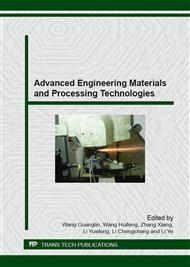p.194
p.200
p.206
p.213
p.218
p.224
p.231
p.237
p.244
Temperature Field Simulation of Wood Powder/PES Composite Powder Material
Abstract:
In view of the physical process of the wood powder/PES composite powder material selective laser sintering forming ,this article establishes the plane moving Gaussian heat source as the input laser heat source model .Based on selective laser sintering wood powder/PES composite powder sintering theory and combined with thermal conductivity of composite powder, specific heat, density and other related theoretical analytical models .It establishes three dimensional finite element model of selective laser sintering process of wood powder/PES composite powder transient temperature field .The laser sintering simulation experiment of wood powder/PES composite powder under different laser power obtains temperature field distribution law of the wood powder/PES composite powder forming under different laser power distribution, and the influence of the forming parts forming quality of wood powder/PES composite powder materials caused by the temperature field. The simulation results also provide certain theoretical basis for the choice of laser power in the subsequent laser sintering experiment.
Info:
Periodical:
Pages:
218-223
Citation:
Online since:
October 2015
Authors:
Price:
Сopyright:
© 2016 Trans Tech Publications Ltd. All Rights Reserved
Share:
Citation:


